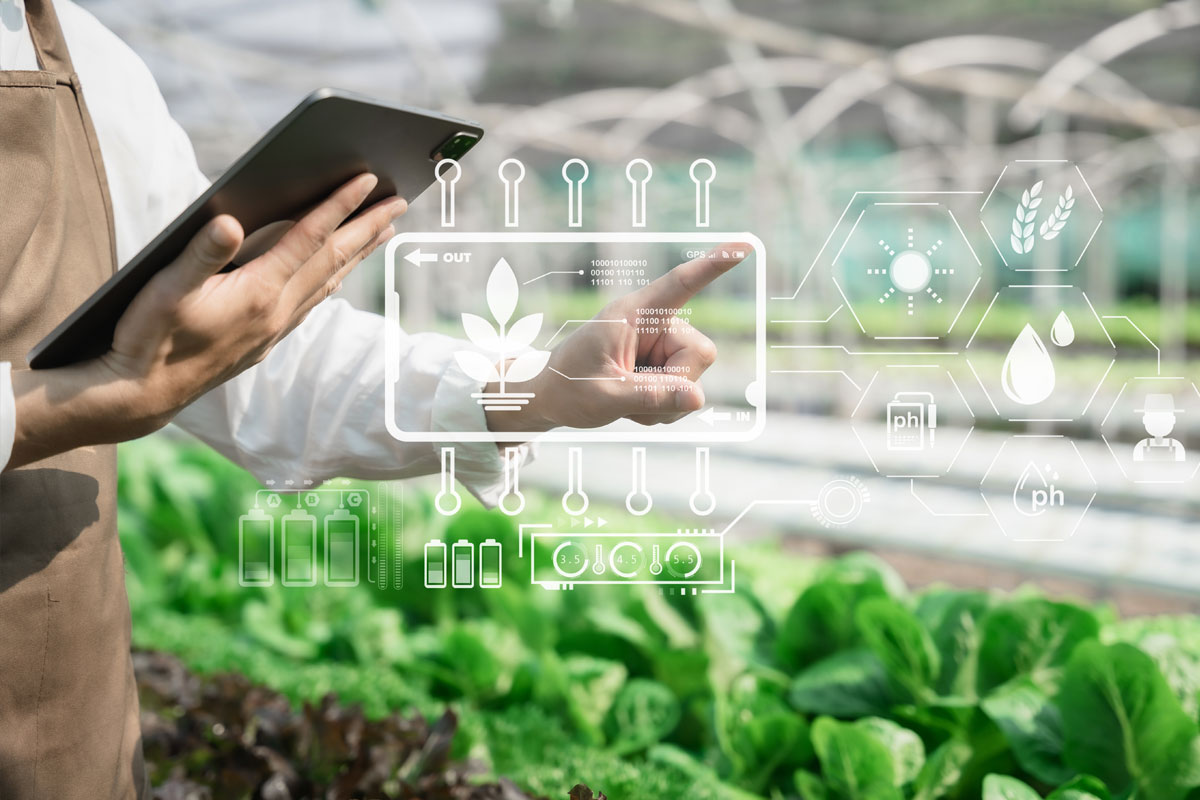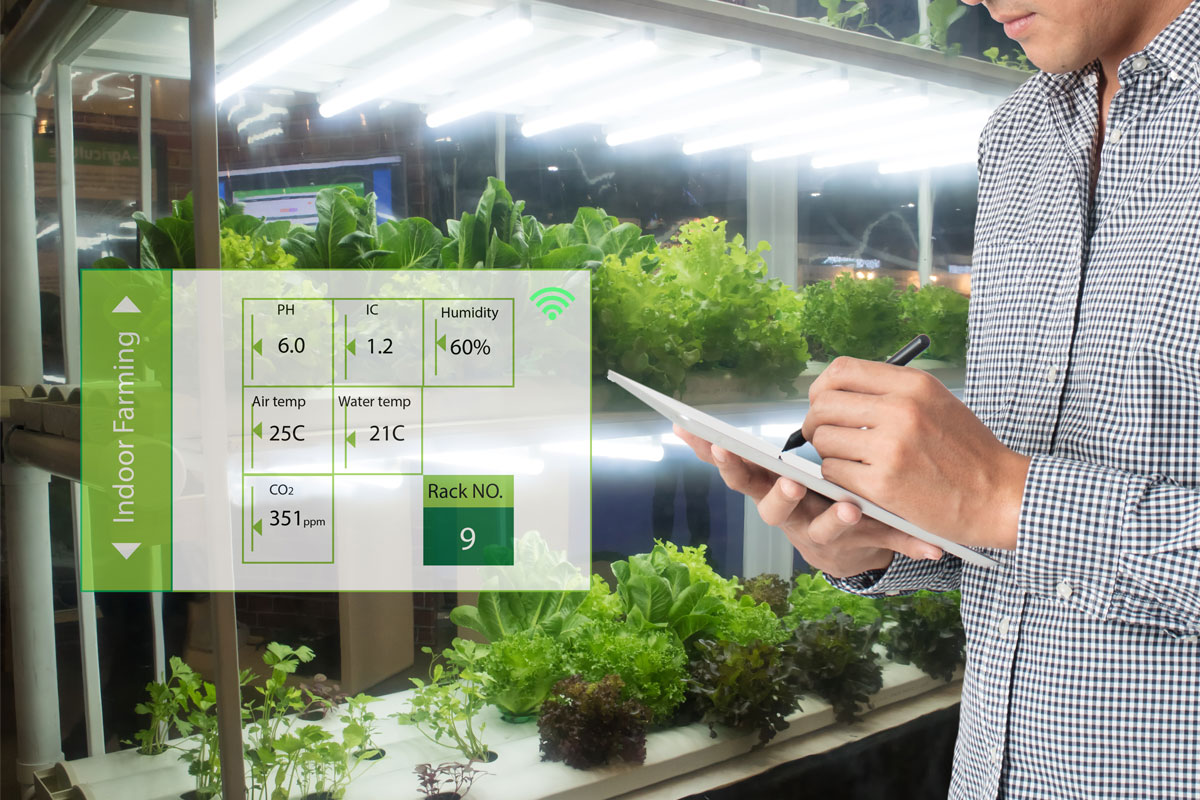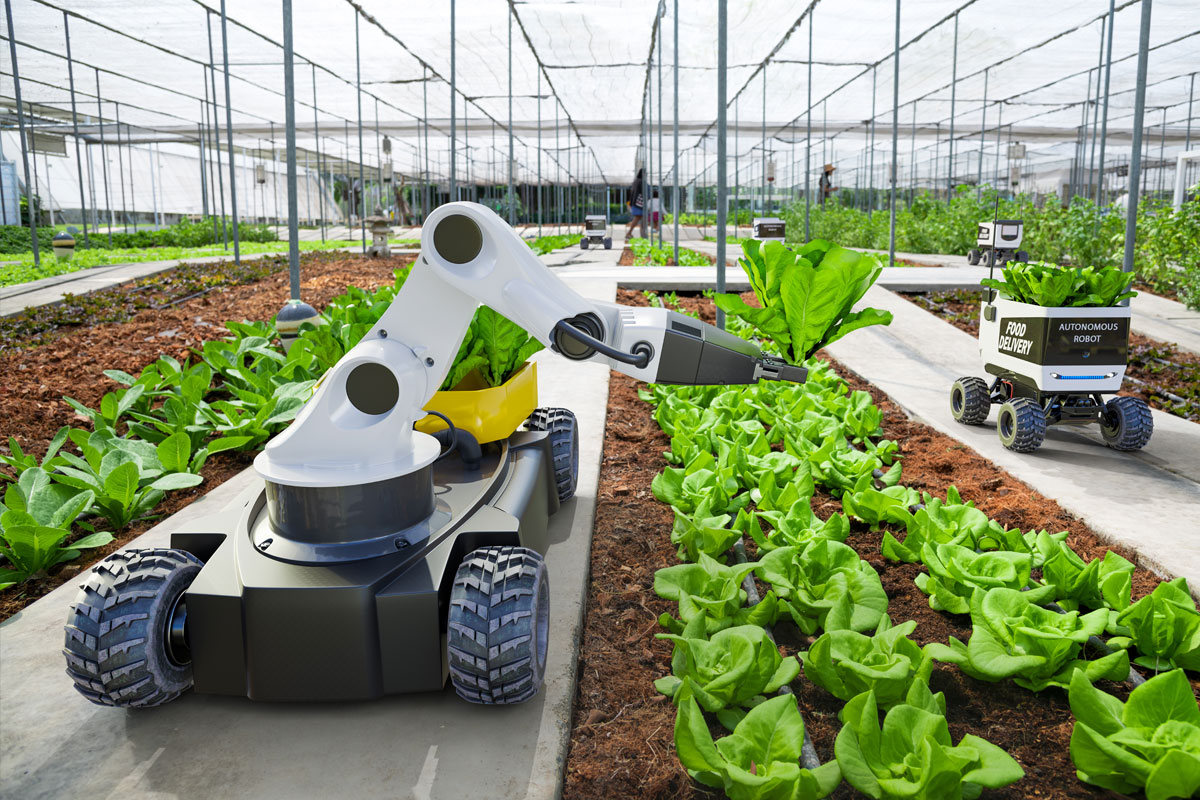
The Internet of Things (IoT) revolutionizes every aspect of modern-day life. From personalized shopping recommendations in apps to smart mirrors that measure fluctuating body mass index measurements daily, IoT is blending the real and virtual worlds in countless ways. However, many consumers don’t see the “behind the scenes” IoT transformation like indoor smart farming. Thanks to IoT, farming technology has changed drastically in the last 20 years and is poised to revolutionize the coming decades of food production. Even animal husbandry has benefitted from IoT innovations!
According to the Food and Agriculture Organization of the United Nations, the global population is expected to hit an astounding 9.7 billion by 2050, forcing food production to increase 70% over the next three decades. In 2023, we already have food shortages worldwide; a whopping 2.3 billion people are moderately or severely food insecure. As the population explodes, how will food production possibly keep pace?
The Market for Smart Indoor Farming
The explosive indoor farming technology market is expected to grow at an astounding 9.4% compounded annual growth rate (CAGR), reaching a valuation of $24.8 billion by 2026. Between 10%-50% of farmers already use IoT, which will increase as technology becomes more accessible and affordable. This growth is also expected to continue revolutionizing food production and agriculture, especially in food-insecure areas.

Smart indoor farming is the process of bringing agricultural infrastructure indoors and leveraging advanced technology like machine learning, predictive analysis, artificial intelligence, and data to track, monitor, and analyze food production. Growers can be more consistent, reduce resource consumption, and mitigate the effects of inopportune weather. Even for more stable food production, IoT-based farming methods support natural resources without depleting them.
Advantages of Smart Indoor Farming
Smart indoor farming offers numerous advantages for growers and, consequently, the human population. Even for everyday consumers looking to grow herbs or vegetables in a small apartment, smart indoor farming offers accessibility, increased yield, and consistency, encouraging sustainability and self-sufficiency across regions.
Higher Crop Yield Compared to Conventional Farming Methods
Concepts like indoor vertical farming allow for increased crop yield for several reasons. First, more food can be produced in a smaller space since growing beds use vertical rather than horizontal space. Second, weather-sensitive crops are also protected from the elements like severe heat or cold, ensuring a greater harvest.
Less Inefficiency and Unpredictability
Smart indoor farming offers consistency and stability regarding the growing environment; from irrigation to humidity to wind to sunshine, conditions can be artificially stabilized in indoor farming.
Less Water and Pesticides
With indoor smart farming, resources are conserved; less water and pesticides are needed because crops aren’t exposed to harsh weather. Some research estimates that indoor farming can use up to 99% less water.
Less Sensitive to Climate Change
Volatile weather shifts like heat waves and harsh climate changes can be extremely damaging to some crops. Even a one-degree increase in annual temperature could kill or massively disrupt the production of outdoor plants, so indoor farming makes food production less reactive to climate change.
More Consistent Harvests
Farmers can have more consistent, predictable harvests when growing conditions are stable and constant. Crops can grow year-round with fewer resources, and less human intervention is needed, creating less room for human error.
Making Indoor Farming Smart with IoT
So, how exactly is indoor farming “smart?” First, most indoor farms rely on IoT devices to control and monitor humidity, temperature, soil moisture, and actuators. Farmers can remotely control plant irrigation patterns, check for diseases, and optimize plant growth and yields. IoT sensors collect data in real-time and communicate that to growers via a website or app. Farmers can analyze changes and make decisions based on strategic data and even learn from other farms on the platform.

Smart Agriculture Companies to Watch
There’s nothing more thrilling than seeing these complex, hard-to-grasp concepts come to life. Take a look at a few companies shaking up farming automation and making it more accessible to everyday consumers pursuing sustainability and self-sufficiency:
Seedo
Targeted at at-home gardeners, the Seedo Hydroponic Growing System offers fully automated, self-contained grow boxes for vegetables, herbs, flowers, and some fruits. Growers can use high-definition internal cameras with live streaming and quickly access all important data in an app.
Growlink
With Growlink, farmers experience real-time crop monitoring, data analytics, and alerts to increase productivity. With integrated software, hardware, and sensors, farmers can produce their best crops.
Gotham Greens
With 18.3 million households embarking on their own gardening adventures in 2021, smart indoor farming is making food production more accessible to everyone. Gotham Greens offers rooftop urban greenhouses in New York and Chicago, using 95% less water and 98% less land than traditional growing methods. IoT provides climate monitoring and real-time adjustments based on learning.
RBTX
From Intelligent Growth Solutions in Scotland, RBTX is a smart system that manages light, temperature, humidity, water, nutrients, and carbon dioxide levels. With remote monitoring and 100% robotic handling available, data is delivered to their user-friendly SaaS platform.
Growy
A vertical indoor farm, Growy is tackling the problem of pesticide misuse and the health consequences of ingesting high levels of pesticides. Their vertical growing structures take up less space, allowing for increased food production in a smaller area. They also enable weather-sensitive crops like lettuce to grow faster without the use of heavy pesticides and chemicals.
How Ambiq Contributes
With smart indoor farming, all AI-enabled garden structures are powered by devices that require extended battery life and optimized performance. These devices must run around the clock, provide countless data points from sensors measuring temperature, humidity, soil moisture, and more, and aggregate them in a way that farmers can understand. Built on our patented Sub-threshold Power Optimized Technology (SPOT®) platform, Ambiq’s products reduce the total system power consumption on the order of nanoamps for all battery-powered endpoint devices.


